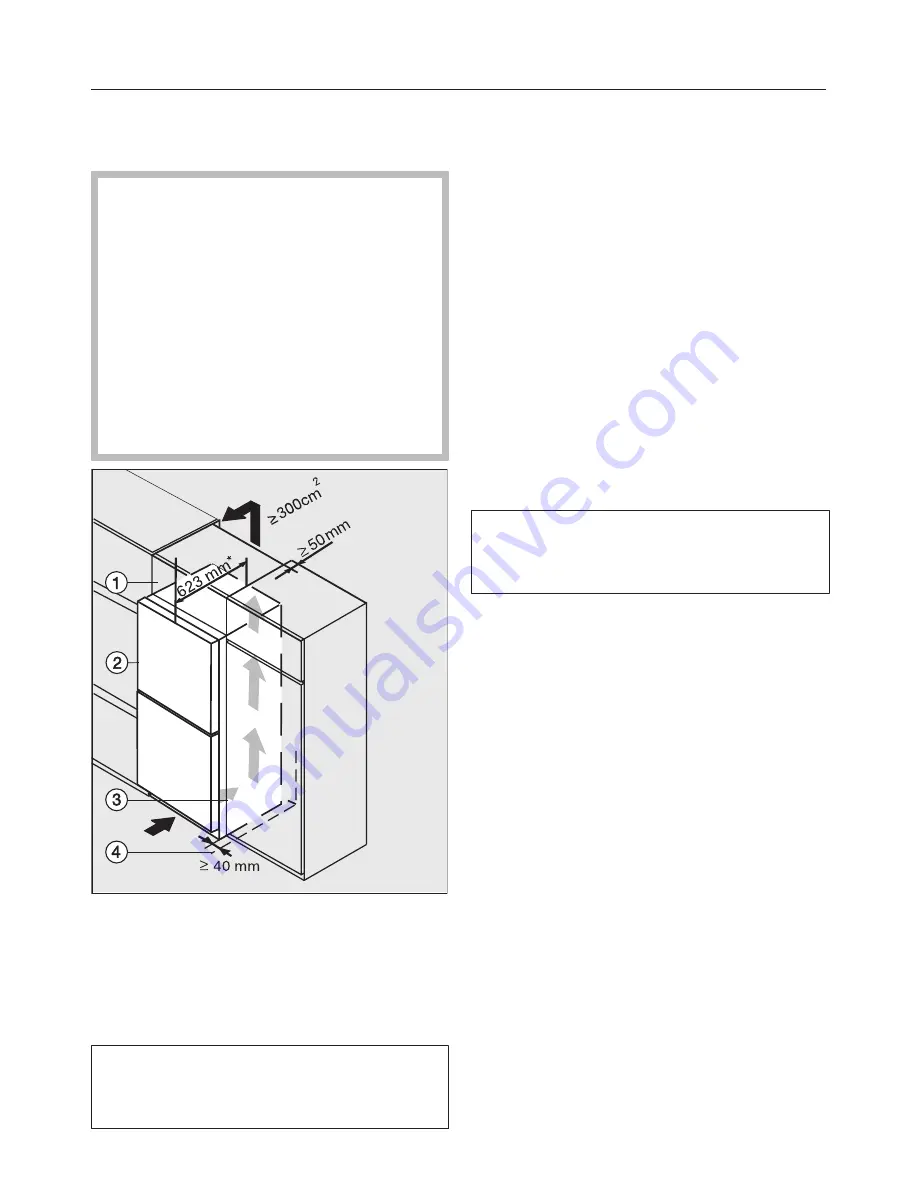
Installation
76
Building the appliance into a
kitchen run
If the ventilation gaps given are
not observed, the compressor will
run more frequently and for longer
periods.
This will result in increased energy
consumption and a higher operating
temperature for the compressor. This
may, in turn, cause damage to the
compressor.
It is essential to observe the ventila-
tion gaps given.
a
Top box
b
Appliance
c
Housing unit
d
Wall
* The appliance depth is increased by
approx. 35 mm for appliances with
wall spacers fitted.
The appliance can be built into a kit-
chen run and installed directly next to a
kitchen furniture housing unit. The ap-
pliance door must protrude in front of
furniture fronts by at least 65 mm. This
enables the doors to be opened and
shut without being obstructed. To
match the height of the rest of the kit-
chen, the appliance can be fitted with a
suitable top box
.
When installed next to a wall
a dis-
tance of approx. 40 mm must be main-
tained on the hinge side between the
wall
and the appliance
, so that the
doors and the handles have sufficient
space for opening.
The larger the ventilation gap, the
more economically the compressor
will work.
– A ventilation gap of at least 50 mm
depth must be provided behind the
whole width of the top box for air to
circulate.
– The cross-section of the air inlet and
outlet under the ceiling must be at
least 300 cm
2
to ensure that air can
circulate without obstruction.
Summary of Contents for KFN 28032 D ws
Page 85: ......
Page 86: ......
Page 88: ...M Nr 10 360 590 00 en GB KFN 28032 D ws KFN 29042 D ws KFN 29032 D ws KFN 29032 D edo ...













































